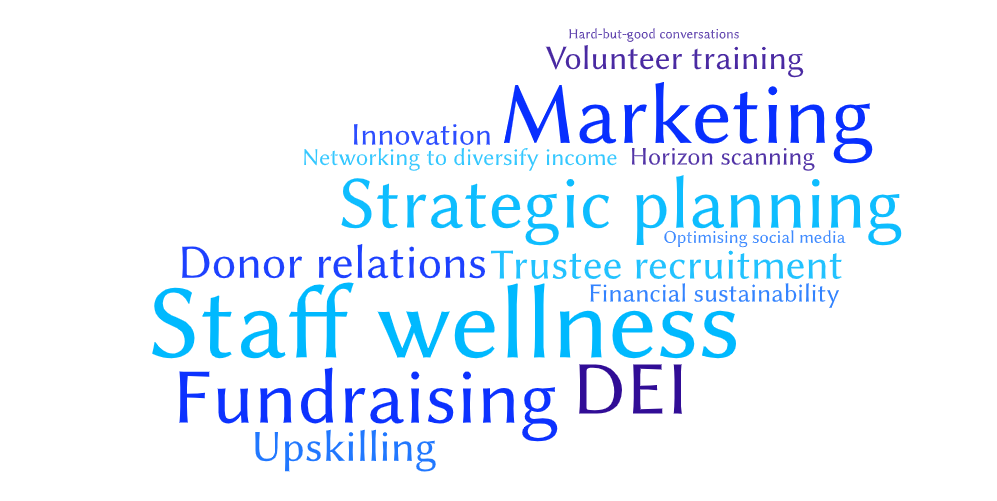Something I hear frequently from charity leaders, especially founders, is ‘We can’t say no to someone who needs help! That’s not what we’re about.’ Sound familiar? Who wants to say no when someone with a critical need knocks on the door? We’re in this field because we want to help people. And it’s understandable when that desire pulls a senior leader away from other priorities.
But every time we say yes, we’re saying no to something else. What do I mean? When I eat at The Breakfast Club, I’m not eating at The Ivy. When I go out with a friend, I’m not staying home with my husband. This seems rather obvious but it’s easy to forget. Especially for a leader being pulled in many directions at once.
The idea that we always say yes to people is actually an illusion.
So, what might be happening in your charity while you’re saying a lot of yeses?
When you say yes, you might be saying no to…

If you want to know whether you’re saying ‘yes’ more than you should, consider asking your staff – and they might need anonymity to give the kind of candid feedback that will help you most.
Even if you think you’re saying yes just the right amount, it might be worth stepping back to consider your process:
- Do you have formal criteria? How aware is your team of the criteria? Does everyone apply it consistently? And, if you do have formal criteria, when did you last evaluate and update it?
- How are requests triaged, or – to put it another way – what are the key drivers of ‘yes’? Is it influenced by what an employee most enjoys doing? For example, some CEOs have a heart for front-line service delivery, and will readily put aside other tasks when a service user contacts them. By stepping onto the front line and away from, for example, strategic planning, that CEO is saying no to things that only the CEO can do…and that puts the charity in jeopardy.
Perhaps your process for yes is simply ‘whatever need is the most pressing’. If so, how do you define that? Does the urgent tend to crowd out the important?
And one more question: Who in the organisation has a voice in what rises to the top of the priority list? Who doesn’t?
Resources that can help
One resource for making tough decisions is the Evaluation Matrix. It cuts through ambiguity by making qualitative criteria more quantifiable. It allows you to collate multiple perspectives and discern what’s most important to you and your team. A second tool is the Paired Comparison Analysis, which puts two options side by side. This allows you to weigh them up relative to each other – a useful approach given that some activities are in direct competition, or perhaps serve the same goal.
Some charities engage a Community Advisory Committee to inform their decisions. This group can include service users, past and present, and/or family members of beneficiaries. Some CEOs periodically consult long-term donors who have a strong understanding of the charity’s vision and mission, without the bias of personal relationships with service users. How could your wider community contribute to the yes-or-no conversation?
If you decide to create an Evaluation Matrix or try a Paired Comparison Analysis, give Pilotlight a shout and let us know how you found it. If you have best practices for engaging with a Community Advisory Committee, we’d love to hear about those too. Or if you’ve found a different resource helpful for tough decisions, tag Pilotlight in a post and share how this has worked for you. Pilotlight is a community of learning and collaboration, with a goal of strengthening the social sector as a whole. Your self-reflection might help another leader, and vice-versa. Let’s say yes where it will have the most impact – and let’s amplify our impact together!

